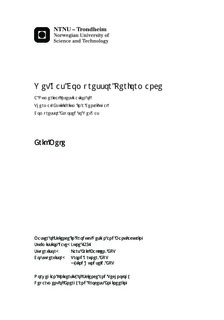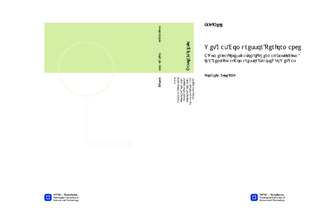| dc.contributor.advisor | Bakken, Lars Erik | nb_NO |
| dc.contributor.advisor | Gruner, Trond | nb_NO |
| dc.contributor.advisor | Hundseid, Øyvind | nb_NO |
| dc.contributor.author | Mele, Erik | nb_NO |
| dc.date.accessioned | 2014-12-19T11:48:44Z | |
| dc.date.available | 2014-12-19T11:48:44Z | |
| dc.date.created | 2012-11-08 | nb_NO |
| dc.date.issued | 2012 | nb_NO |
| dc.identifier | 566054 | nb_NO |
| dc.identifier | ntnudaim:8194 | nb_NO |
| dc.identifier.uri | http://hdl.handle.net/11250/234738 | |
| dc.description.abstract | Wet gas compression and subsea compression technology has gained increased focus in the recent years. With aging fields on the Norwegian continental shelf and new discoveries in arctic regions, subsea compression could boost aging gas fields and make remote fields profitable where extraction is difficult. Wet-gas compression could reduce the need for expensive scrubbers and separators and this would be a major economic enhancement to subsea processing. There is currently no standard for wet gas compression as the ASME PTC 10 [1] offers no guidance on this. The complex phenomena encountered in wet-gas compression is not yet fully understood. The present work is concerned with the thermal discharge equilibrium of a wet-gas compressor, as this will strongly influence the performance calculations of the compressor. If there is thermodynamic equilibrium at the discharge, then measurements and calculations become relatively simple. If not, then everything becomes more complex.A numerical simulation model was established, both for dry and wet gas. An open loop test rig at NTNU was used to compare calculations with experiments to validate the model. This was done with great success for dry gas. For wet gas accurate measurements were not obtained. The working fluid was an air-water mixture, where water was injected into almost saturated air.To calculate the possible gas discharge temperature under heavily wet conditions, a power balance was also set up. The uncertainties in the frequency converter and the torque meter were too great for reliable power calculations. A new measurement technique has been proposed to be able to measure the gas temperature, utilizing a cyclone to separate the gas prior to the measurements. This technique has not been tested.The numerical model showed small signs of non-equilibrium conditions at GMF 0,8. The discharge temperature proved as large as 0,16°C or 0,15°C depending on the droplet diameter. These differences are still significant when calculating the polytropic efficiency. Evaporation proved to be virtually non-existent in the calculations, due to almost saturated conditions at the inlet. Still, validation against wet-gas experiments is needed to confirm the findings. | nb_NO |
| dc.language | eng | nb_NO |
| dc.publisher | Institutt for energi- og prosessteknikk | nb_NO |
| dc.subject | ntnudaim:8194 | no_NO |
| dc.subject | MTPROD produktutvikling og produksjon | no_NO |
| dc.subject | Energi-, prosess- og strømningsteknikk | no_NO |
| dc.title | Wet Gas Compressor Performance: A Numerical Investigation of Thermal-Equilibrium in a Centrifugal Compressor Exposed to Wet Gas | nb_NO |
| dc.type | Master thesis | nb_NO |
| dc.source.pagenumber | 144 | nb_NO |
| dc.contributor.department | Norges teknisk-naturvitenskapelige universitet, Fakultet for ingeniørvitenskap og teknologi, Institutt for energi- og prosessteknikk | nb_NO |

